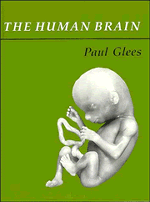Book contents
- Frontmatter
- Contents
- Preface
- 1 Introduction to brain research
- 2 Evolution of the nervous system
- 3 Fine structure of the nervous system
- 4 The nature and transmission of the nervous impulse
- 5 Glia, cerebral blood vessels and neurons
- 6 Cerebral blood and cerebrospinal fluid systems
- 7 The cerebral hemispheres
- 8 The spinal cord
- 9 The brainstem and cerebellum
- 10 The hypothalamus and the autonomic nervous system
- 11 Olfaction and taste
- 12 The auditory system
- 13 Vision and visual pathways
- 14 Touch, pain and proprioception
- References
- Index
11 - Olfaction and taste
Published online by Cambridge University Press: 31 October 2009
- Frontmatter
- Contents
- Preface
- 1 Introduction to brain research
- 2 Evolution of the nervous system
- 3 Fine structure of the nervous system
- 4 The nature and transmission of the nervous impulse
- 5 Glia, cerebral blood vessels and neurons
- 6 Cerebral blood and cerebrospinal fluid systems
- 7 The cerebral hemispheres
- 8 The spinal cord
- 9 The brainstem and cerebellum
- 10 The hypothalamus and the autonomic nervous system
- 11 Olfaction and taste
- 12 The auditory system
- 13 Vision and visual pathways
- 14 Touch, pain and proprioception
- References
- Index
Summary
Olfaction
Introduction
The ability to smell, a highly sensitive modality even in Man, is of great significance for our social life, both physiologically and psychologically. From a biochemical point of view olfaction is related to taste and both are chemical senses. Many animals are guided almost exclusively by the sense of smell in periods of sexual activity, and dogs and cats appear almost blind and deaf to other stimuli when ‘on heat’. A surprisingly small amount of substance is required for detection by olfactory receptors.
To characterise the strong effect odours have on behaviour a specific term ‘pheromone’, was introduced by Karlson & Lüscher (1959) in their work on insects searching for a mate and guided by odour. Pheromones are olfactorily active substances which, when smelled, trigger a specific behavioural pattern in neuroendocrine mechanisms in a similar way to hormones. These pheromones may cause profound changes in endocrine secretory systems or may simply attract the opposite sex, in which case they are referred to as primer pheromones (Keverne, 1983).
The sense of smell in Man is highly efficient, in spite of the fact that the area in the nose housing the receptors is very small (Figs 9.35 and 11.1) and the greater part of our nasal mucosa serves to warm the inhaled air. The olfactory cells in Man occupy a relatively small area in the upper part of the nose and nasal septum and, for this reason, odiferous substances transported by air and inhaled do not reach this upper nasal portion (Fig. 9.35) directly but by diffusion inside the nose. This is why we sniff the air in order to reach the receptors.
- Type
- Chapter
- Information
- The Human Brain , pp. 153 - 156Publisher: Cambridge University PressPrint publication year: 1988



